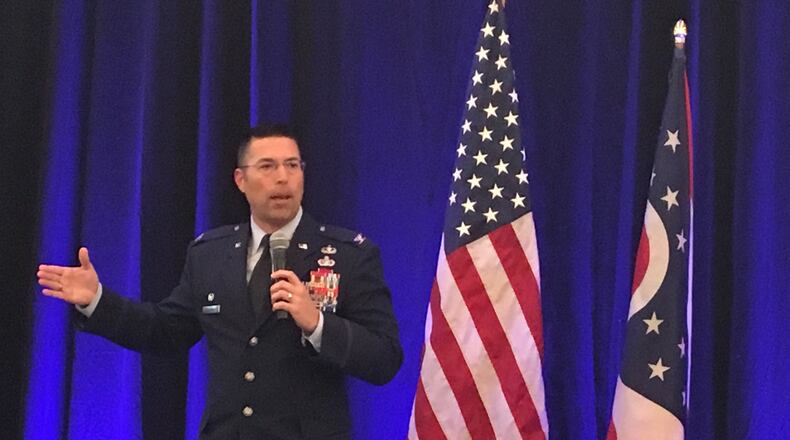“Obviously, we have to look at this pragmatically,” Sherman said. “For the investment that we are making …What are the things that we can stop doing? Or what are the things that we can dial back on? Because it is in many ways a zero sum game.”
» RELATED: Dayton Development Coalition names new military, aerospace executive
Ensuring readiness in the face of constrained budgets is a big concern for defense leaders, Sherman and others said at the Ohio Defense Forum in Columbus on Monday. The forum, now in its fourth year, is hosted by the Dayton Development Coalition and Rep. Mike Turner, R-Dayton, and seeks to bring together Ohio’s legislators, members of Congress and aerospace and military leaders for two days to discuss defense issues.
From 2007 to 2019, resource funding has decreased by around 53 percent, Sherman said. The decrease in resources comes as Wright-Patt recently recently topped 30,000 employees for the first time in around 30 years.
Before 1989, Wright-Patt hadn’t employed more than 30,000 since 1964. It marks just the 10th time Wright-Patt has employed more than 30,000 in 101 years, base data shows.
Taking care of growing needs is difficult to do when resources have decreased, Sherman and other Ohio military leaders said.
“With less and less Airmen and more and more requirements, we’re really forced to make decisions,” said Col. Gregg Hesterman, commander of the 178th Wing of the Springfield Air National Guard.
» RELATED: Portman: F-35 program has opened office at Wright-Patterson
The need for more Airmen is a challenge the Air Force has said it will face head on. The branch has a goal of adding more than 70 combat squadrons and 40,000 Airmen by 2025 to better address threats from China and Russia, former Secretary Heather Wilson announced last year at the Air Force Association’s annual Air, Space and Cyber conference.
As the Air Force prepares to face new challenges, its important for the military branch to look “downrange,” Sherman said. That’s because “the first shot in the next fight isn’t going to be another Pearl Harbor,” Hesterman said.
Many of the world’s future conflicts will start in cyberspace, a territory Sherman said Wright-Patt is already quite familiar with.
After the Pentagon, Wright-Patt faces more cyber attacks and penetration attempts to its cyber systems than any other military installation, Sherman said. Wright-Patt, sometimes referred to as the brains of the Air Force, is home to the Air Force Research Laboratory and the National Air and Space Intelligence Center.
“When you think about the informational capital, when you think about the classified information, when you think about the knowledge that’s vested there, it makes perfect sense,” Sherman said.
Future wars will require quick action and readiness from the armed forces, Sherman and other leaders said. Unlike past conflicts, such as World War II, America will not have time to find a solution to the next war, said Rear Adm. John Palmer, commander of the Defense Logistics Agency Land and Maritime.
“We will not have the time to build our way out of the next fight,” Palmer said. “The things we need will have to be installed or already on the shelf at the start of the next fight.”
FIVE FAST READS
• Central State trying to build on momentum from financial rebound
• Drones nearly hit planes 117 times in Ohio in 5 years
• Wright-Patt tops 30K employees for first time in 30 years
• Would governor’s 17-point plan stopped Sunday’s gun violence?
• Gov. DeWine: ‘Changes certainly have to be made at Wright State’
About the Author
